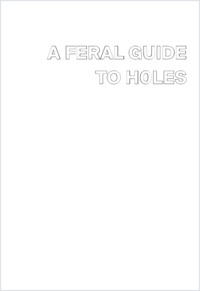A feral guide to holes : photographic technologies and problematics of representation
SONAR|HES-SO
- Docher, Fig (Jenna)
- Ray, Gene (Degree supervisor)
- Genève : Haute école d'art et de design de Genève
125 pages
Master of Arts HES-SO en Arts visuels avec orientation en CCC - Etudes critiques curatoriales cybermédias: Haute école d'art et de design de Genève, 2022
HEAD-Genève
Arts visuels
CCC
Photography
History of photography
Compositing
Indexing
Tagging
Trans photography
Surveillance
Extraction
Knowledge organization
English
The material preconditions of photographic technologies are capitalist infrastructures of accumulation: add a layer, squeeze the cost, skim the profit. These infrastructures are in turn premised on ‘technologies of trample,’ in which land and bodies are seen as infinite sources of value to by extracted by any means, no matter how violent. These infrastructures generate ‘slack,’ which can be monetary and scalar. Scalar slack produces h0les: obfuscation of material infrastructural preconditions. These h0les make it possible for users to be unaware of these infrastructures (user ignorance), and foster cultures of moral impunity regarding consumption and use of technologies (user innocence). Many of the preconditions of contemporary information technologies, including the ‘statistical fiction of norm’ and numerical hierarchical indexing systems coalesced in the same geographical and historical context as the ‘advent’ of photographic technologies. Systems for informational capture, tagging, and tracking are entangled with social, state, and commercial identification and recognition. These are all premised on the statistical fiction of norm, which formalizes and rationalizes systemic discrimination and violence in the form of the eradication of otherness. Photographic technologies collide manifestly with information technologies in police photography at the turn of the 20th century; the infrastructures of biometric surveillance therein instated resonate clearly with contemporary biometric surveillance, in which the photographic portrait itself has become a site of capturable biometric information. Policing is entangled with library science and bibliography, which are entangled with information science. Moving through the 20th century, the aim to computationally represent and categorize morphs into the aim to identify and recognize computationally, which leads into systems of ubiquitous capture and computation. Because of the preconditions and underlying infrastructures of these systems, they are by definition socially and politically biased, and attempts to produce ‘truth’ and ‘objectivity’ therein inescapably produce h0les: the knowledge produced is necessarily incoherent. Social and political visibility premised on systems of identification and representation as are therefore also incoherent.
- Language
-
- English
- Notes
-
- Haute école d'art et de design de Genève
- Arts visuels
- CCC
- hesso:head
- Persistent URL
- https://folia.unifr.ch/global/documents/322446
Statistics
Document views: 72
File downloads:
- DOCHER Fig Jenna_A FERAL GUIDE TO H0LES SPREADS 72ppi.pdf: 133
